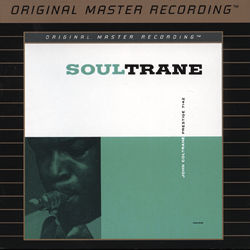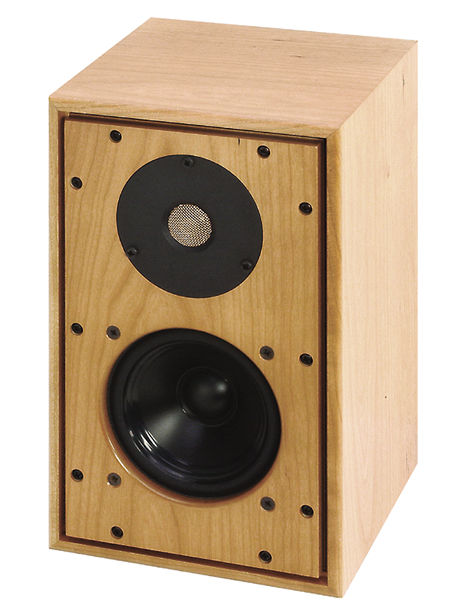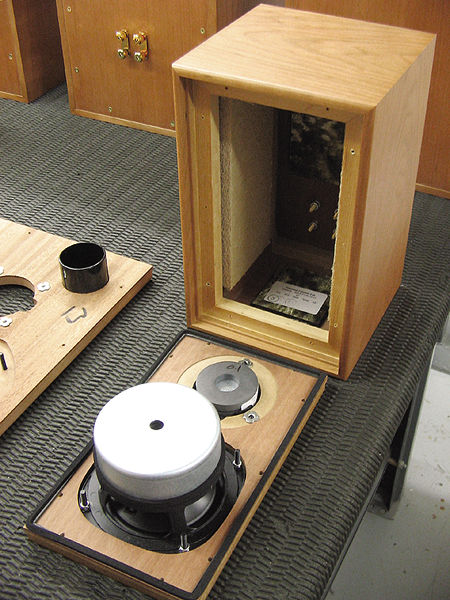| Columns Retired Columns & Blogs |
The Fifth Element #32
I recently spent a few days filling in for a local engineer, recording middle-school and high-school bands and choral ensembles. This was a requirement of the statewide music-educator adjudication process. (Don't laugh; recording high-school bands is how Telarc got its start.)
Footnote 1: Available from the secure "Recordings" page on this website.
It was an interesting experience. One of the first things it did for me was to make me wish I had an M/S (Mid/Side, or "sum and difference") microphone array and a variable M/S matrix. (I hope to return to M/S recording in a future column.) It also made me wish that I had one of those new, ultracool, portable, high-resolution hard-disk recorders—such as the Sound Devices 722. To heft one, as I have, is to crave it. With any luck, I can cover that in a later column, too.
 But the most salient impression the experience made on me was to prompt me to revisit one of my perennial topics: cost-effective stereo systems for music lovers. In conversation with the out-of-state adjudicators and with several local teachers, it became apparent to me that high-end audio has made few (if any) inroads into the awareness of people who have chosen to dedicate their working lives to teaching music to children. Friends, there is a lot wrong with this picture!
But the most salient impression the experience made on me was to prompt me to revisit one of my perennial topics: cost-effective stereo systems for music lovers. In conversation with the out-of-state adjudicators and with several local teachers, it became apparent to me that high-end audio has made few (if any) inroads into the awareness of people who have chosen to dedicate their working lives to teaching music to children. Friends, there is a lot wrong with this picture!
Were I an audio retailer, it would seem to me that at least some of the music educators in my area might be good prospects for home-audio systems set up for music rather than for home theater. Perhaps I would offer to set up a demonstration system at their next annual meeting—or, working with the local person who records their adjudications, invite them to bring the CDRs of their ensembles' performances into my store, so they could hear them on a good system.
Music educators are not rolling in money, and we know that every last one of them will be laid off before the first sports coach is. On the other hand, they are not dirt-poor, and a music teacher often makes up part of a two-earner family. I can't help but think that the audio retailer who meets them at least halfway will get some word-of-mouth marketing going. It's a question of priorities. Perhaps retailers could do a better job of selling to people who are not equipment hobbyists, the value proposition of a high-end audio system. If a high-school music teacher buys a Mazda Miata (the name, I've been told, is Italian girlspeak for "luv ya!") as a weekend-and-summer car, most people will say "Good for him (or her)." Spending an equivalent amount of money on a stereo system that can be enjoyed every day of the year and is also directly related to the teacher's career (I make no suggestion as to its tax treatment) doesn't seem to be happening. But it should.
Which leads to the near-eternal question: What is the least amount of money you can spend and still get most of the sound you want to hear? Recent experiences with three loudspeakers, an integrated amplifier, and an FM receiver have provided some at least tentative answers. But first, a bit of background.
Years ago, when I was writing for The Abso!ute Sound, I did a series of columns organized around the conceit that I was picking out a stereo system for the great American poet Wallace Stevens. Yes, I knew that he had been dead since 1955, but I think of him as the most musical and musically sensitive of the great American poets.
The test piece I ordained for that quest was the—as far as I am concerned—still-unsurpassed recording of Brahms' Ein deutsches Requiem, sung (in German) by the Atlanta Symphony and Chorus conducted by Robert Shaw (CD, Telarc CD-80092). The first three minutes are magisterial. The string basses' throbbing is augmented by extremely deep, steady tones on the organ pedals. The entry of the chorus is perfectly judged in all respects. Even if listening to the entire work is not your cup of tea, the first three minutes should be in your arsenal of test tracks.
(I have asked Telarc to consider reissuing the original recording as an SACD. However, if it was not a Stockham Soundstream 50kHz master, query the benefit compared simply to playing the plain old CD (POCD) on a good upconverting player. I'm not prejudging that outcome, merely querying. The Stockham system was a very good digital recording system that failed to catch on; much the same can be said of dbx's delta-sigma digital recorder.)
In retrospect, perhaps the choice of the Shaw Brahms Requiem was too stringent a test. Joined by Mahler's symphonies and bits and pieces of other orchestral works, the German Requiem is really at one end of the bell curve in terms of its audio demands. (This includes rock and pop music. Rock and pop gets played at high volume levels, but its dynamic range and, except for synth bass, frequency range are less than those of orchestral music.) As it was, the only "affordable" speakers that could do justice to the Brahms' frequency and dynamic requirements were Shahinian Obelisks, and only when driven by a Plinius 8150 integrated amplifier.
Unfortunately, in the interval since I made those explorations, the falling dollar has taken its toll. The Obelisks are made here, but almost entirely of components imported into the US (including the Baltic-birch plywood for the cabinets). Back then they cost $2800/pair; now they're $4400/pair. The Plinius 8150's successor is the 9200. The 8150 then was $2995; the 9200 now is $4095. So, even though both remain excellent choices for the lover of large-scale orchestral works, they're getting up there in price.
My first stop on this new trip was the latest version of Harbeth's HL-3P ($1595/pair, stands required), the English company's drop-in replacement for the BBC's LS3/5a broadcast monitor (see The Fifth Element," October 2002 and JA's recent essay on the LS3/5a). Stands were the Sound Organisation's sturdy, affordable, 24"-high Z570s, a bargain at $245/pair. Walter Swanbon of Harbeth's US importer, Fidelis, graciously hand-delivered the HL-3P-ES2s and set them up, using some Mortite I had on hand. After hearing about an hour's worth of music, Walter pronounced himself satisfied with the setup and with my listening room.

Gloriosky, these little speakers are just great to listen to! Over and above that, their elegant size, first-class fit'n'finish (the veneers are mirror-matched left to right, including the front and the rear panels), and the sense of participating in the continuation of audio history that they provide, made the time I spent with them immensely pleasurable. High "gotta havvit" quotient; these are speakers I could almost live with indefinitely.
The drawback is that they lack low bass. (Quelle surprise—their woofer is the size of a CD.) A good subwoofer might almost bridge that gap, keeping in mind that a good subwoofer (one that can play musical tones, as distinct from reproducing the artificial footsteps of artificial dinosaurs) is not going to be cheap, and your low bass will then be in mono. But I cheerfully admit that, in certain rooms, the satellite/sub approach can be the most affordable way to get around speaker-placement and bass-mode problems.

About listening to music through the HL-3P-ES2s: Sometimes I think we may deceive ourselves. We think of certain tracks as "test tracks," yet are such tracks (I have my favorites, as longtime readers will know) really more likely to point out flaws in the speakers, or are they more apt to flatter the speakers, to make them sound good?
Here's an example of what I mean. My friend Jeff Mitchell was, on balance, skeptical of Dynaudio's 25th-anniversary loudspeaker's value proposition (you can read my comments on this speaker here). But after I'd played for him John Atkinson's recording of Cantus singing "Shenandoah," from Let Your Voice Be Heard (CD, Cantus CTS1201 (footnote 1)), he turned to me and said, "John, if that had been the only track I'd heard, I'd say these were the best speakers in the world."
Footnote 1: Available from the secure "Recordings" page on this website.
- Log in or register to post comments




































